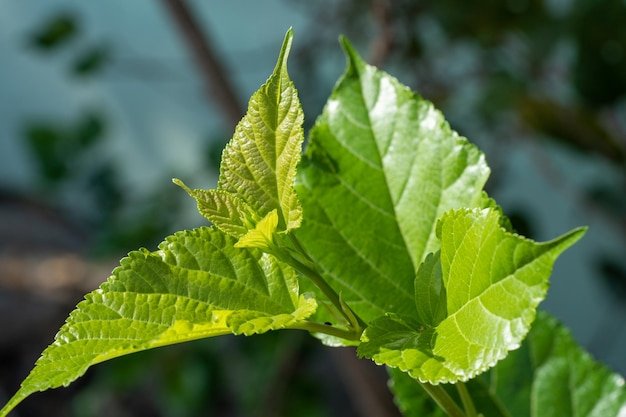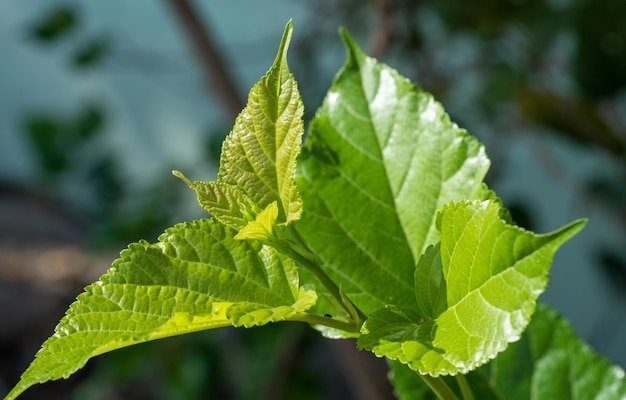
You might be wondering what makes mulberry leaves the perfect food for silkworms. After all, there are countless types of plants in the world. Well, think of mulberry leaves as a five-star meal that caters specifically to silkworms. They’re packed with the right balance of nutrients, making them a gourmet option that fuels the silkworms’ growth and transforms them into the silk-spinning marvels they are. Let’s explore the relationship between mulberry leaves and silkworms in more detail.
The Life Cycle of Silkworms
Understanding the importance of mulberry leaves starts with knowing a bit about silkworms themselves. Silkworms, or *Bombyx mori*, go through several stages in their life cycle: eggs, larvae, pupae, and adults. The real excitement happens during the larval stage, where these tiny critters eat and grow at an astonishing rate.
During this phase, silkworms can increase their body weight tremendously, often by around 10,000 times! To achieve this growth, they need a constant supply of food that’s both nutritious and plentiful. Mulberry leaves fit the bill perfectly! These leaves are soft and easy to digest, which allows silkworms to extract the nutrients they need efficiently.
Another fun fact about silkworms? They’re quite picky eaters. You might say they have a refined palate when it comes to their food choices. While there are other options available, like oak or fig leaves, none can match the nutritional profile of mulberry leaves.
The Nutritional Power of Mulberry Leaves
So, what makes mulberry leaves such a nutritional powerhouse for silkworms? They’re rich in proteins, vitamins, and minerals that are essential for the growth and development of these little larvae.
Here’s a quick breakdown of key nutrients found in mulberry leaves:
- Proteins: Mulberry leaves contain high levels of protein, which is crucial for muscle development and overall growth in silkworms.
- Vitamins: Vitamins A, C, and E are present, supporting everything from immunity to reproduction.
- Minerals: Essential minerals like calcium and iron help strengthen their bodies as they grow.
Think of these nutrients as the building blocks for the silkworm’s future. Just like how we need a balanced diet to stay healthy, silkworms rely on these nutrients to prepare for their transformation into adult moths. It’s this nutrient-rich diet that ultimately allows them to produce silk, which is the final reward for all their hard work.
How Mulberry Leaves Support Silkworm Growth
When it comes to supporting the growth of silkworms, mulberry leaves play several vital roles. For starters, the leaves provide the energy silkworms need for their rapid growth. The high protein content aids in muscle development, while other nutrients contribute to their overall health.
The process is almost like prepping for a big athletic event. Just like an athlete consumes energy-rich foods to perform at their best, silkworms eat mulberry leaves to prepare for their metamorphosis. As they munch away, they’re not just growing; they’re storing energy for the next phase of their life cycle.
Moreover, the soft texture of mulberry leaves makes them easy for silkworms to consume. Imagine trying to eat a tough steak when you really just want a piece of cake. Silkworms prefer the softness and digestibility of mulberry leaves, making them their first choice for a meal. That’s why these leaves are cultivated in large quantities in sericulture, the practice of raising silkworms.
Cultivation and Availability of Mulberry Leaves
The cultivation of mulberry trees is an essential aspect of sericulture. Farmers grow these trees mainly for their leaves, which are harvested regularly to feed the silkworms. In fact, the availability of fresh mulberry leaves can make or break a silkworm farmer’s success.
Mulberry trees thrive in various climates, but they do best in temperate zones. They’re pretty hardy and can grow in different types of soil. This adaptability makes them a popular choice among farmers.
Typically, mulberry leaves are harvested daily during the silkworm’s feeding stages. Farmers ensure that the leaves are fresh and free from pesticides, as silkworms are sensitive creatures. The fresher the leaves, the better it is for the silkworms’ growth and the quality of the silk they produce.
The Impact of Mulberry Leaves on Silk Production
Now that you know how crucial mulberry leaves are to the growth of silkworms, let’s discuss their impact on silk production. The quality of silk depends significantly on the health and diet of the silkworms.
Silkworms fed on high-quality mulberry leaves tend to produce stronger and more resilient silk fibers. Think of the silk as a direct reflection of their diet. A well-fed silkworm is likely to produce silk that is smoother, shinier, and more durable.
It’s a delicate balance, though. Farmers have to monitor the silkworms’ diet closely, as any change in the quality of the mulberry leaves can affect silk yield. This is why farmers often invest in quality mulberry cultivation practices to maximize their silk production.
Common Challenges in Silkworm Diets
While mulberry leaves are a fantastic food source, feeding silkworms isn’t without its challenges. One common issue is the depletion of mulberry leaves, especially during off-seasons. If farmers can’t provide enough fresh leaves, it could stunt the growth of the silkworms.
Another issue is pest infestation. Just like any crop, mulberry trees can attract pests that may damage the leaves, affecting their nutritional value. Farmers need to be vigilant and practice integrated pest management to keep their trees healthy.
Additionally, improper storage of mulberry leaves can lead to spoilage. When farming silkworms, it’s crucial to ensure that the leaves stay fresh and are free from fungi or mold, as this can be harmful to silkworms.
In the grand tapestry of silk production, mulberry leaves are the unsung heroes. They provide essential nutrients that support silkworm growth and, ultimately, the quality of the silk we cherish. Understanding the critical role of mulberry leaves helps us appreciate the hard work that goes into producing this luxurious material.
From their life cycle to the challenges of their diets, there’s a lot to learn about these fascinating creatures and their favorite food. Next time you see silk garments, you’ll know the journey they took—from mulberry trees to silkworms and finally to you. So, here’s to the humble mulberry leaf and the wonders it brings to our world!

